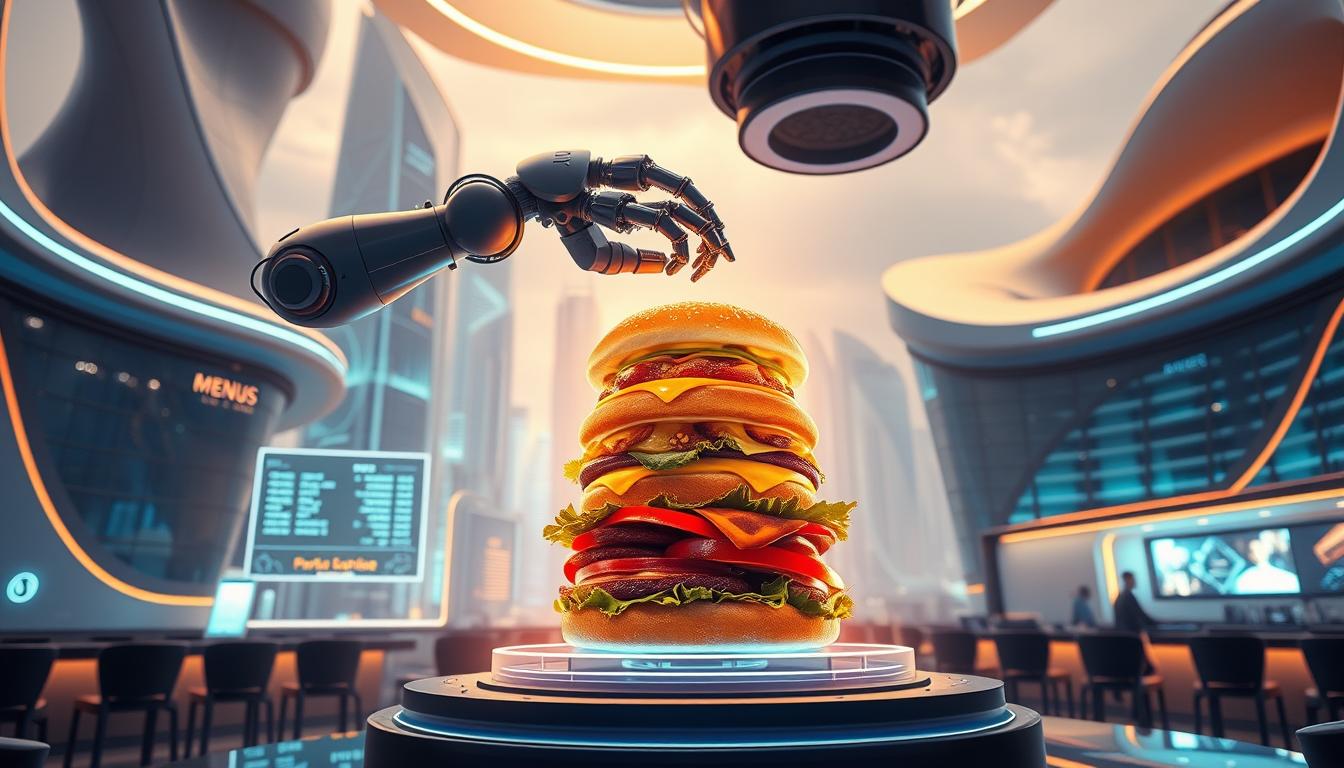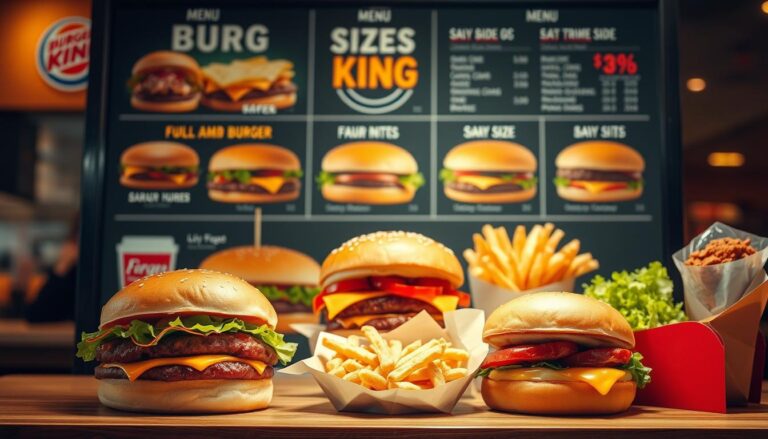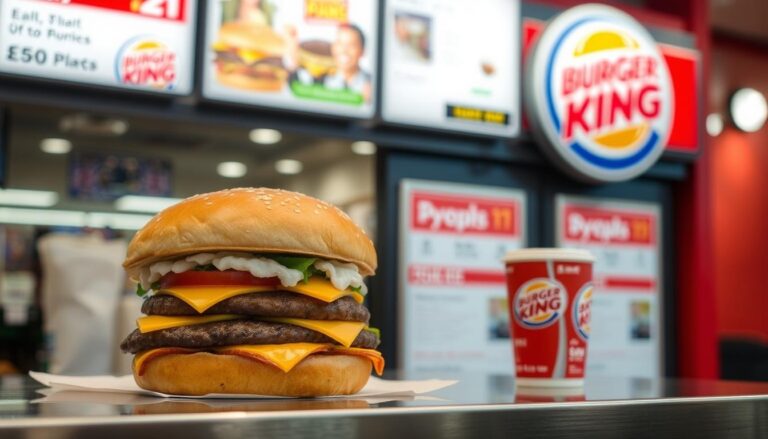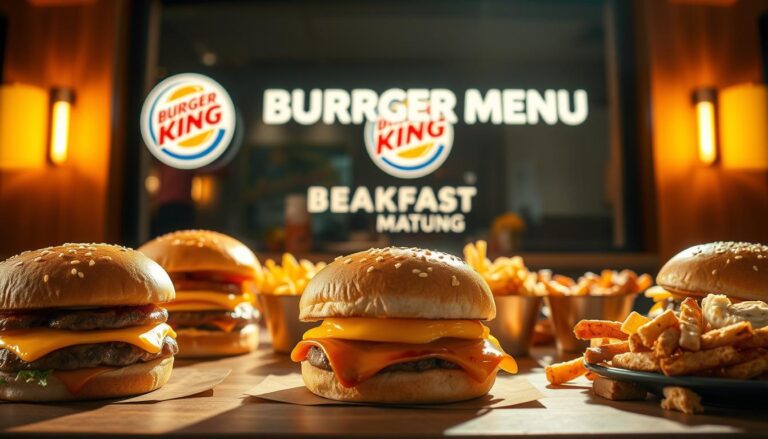The Burger That Transformed Everything
Imagine a food revolution that changes how we see food production. Bill Gates calls this new tech “the future of food.” It uses science to improve meat making.
The One bite changed everything Burger menu is more than a meal. It marks a big change in food tech. It brings together great taste and new science.
People looking for green protein options now have many choices. These options question old ways of farming.
Lab-grown meat and plant-based proteins are key to this change. They’re good for the planet and help solve big problems like using too many resources and making too much carbon.
Scientists have found ways to make protein without raising animals. They use cells and biotech to make meat that’s as good as the real thing.
This move from lab to table shows amazing science. It shows how tech can solve big problems and give us great food. Each burger is a chance to make food better for the planet.
More and more people see how their food choices affect the Earth. New burger tech lets us eat well without harming the planet. It’s a big change in how we see food and caring for the Earth.
As the world’s population grows, these new food techs offer hope. They help meet our protein needs without hurting the environment. They’re a smart way to tackle big farming and ecological issues.
The Rise of Lab-Grown Meat: A Game-Changing Innovation
The future of meat production is changing fast. Lab-grown meat is a new technology that could change how burgers are made. It tackles big issues like food sustainability and animal welfare.
Scientists are working on cell-based meat tech. It aims to make tasty burgers without raising animals. This method grows animal cells in labs, cutting down on environmental harm.
Understanding Cell-Based Meat Production
- Stem cells are taken from animals in a gentle way
- Cells are grown in special nutrient-rich mediums
- Cells grow into muscle tissue
- The tissue is then turned into meat products
The Science Behind Cultured Meat
Cellular agriculture uses biotech to make protein alternatives. Scientists use advanced methods to make the meat taste and feel like the real thing.
Early Pioneers in Lab-Grown Meat Technology
Companies like Memphis Meats and Mosa Meat are at the forefront. They’re working on making cell-based meat production bigger. Their work shows great promise for a greener food future.
As tech gets better, lab-grown meat might become a common choice. People will have a new, kinder, and greener option for their protein needs.
One bite changed everything Burger menu
The world of food changed with the rise of unique burgers. Chefs and entrepreneurs created the best burger menus, pushing the limits of what burgers could be. They used new cooking methods and ingredients.
These new menus focused on flavor, being green, and being healthy. Restaurants started using local produce and new food tech.
- Plant-based protein alternatives
- Locally sourced organic ingredients
- Customizable burger options
- Sustainable meat production techniques
These unique burgers drew in food lovers and health fans. Restaurants offered more than just beef patties. They introduced:
- Lab-grown meat options
- Vegetarian and vegan burger selections
- Internationally inspired flavor profiles
- Nutrient-rich ingredient combinations
These changes turned the burger into a work of art. The top burger menus now stood for more than just food. They represented a shift towards healthier, greener eating.
Beyond Meat: Leading the Plant-Based Revolution
The plant-based meat alternative industry has changed how we see burgers. Beyond Meat is leading this change. It’s making us think differently about protein and food choices.
Plant-based burgers have gone from being rare to being everywhere. Food scientists have made meat substitutes that taste and feel like real meat. They also have the same nutrients.
The Development of Plant-Based Alternatives
- Advanced protein extraction techniques
- Precise flavor and texture engineering
- Nutritional optimization of plant proteins
- Sustainable ingredient sourcing
Success Stories in Restaurant Chains
| Restaurant Chain | Plant-Based Offerings | Consumer Impact |
|---|---|---|
| Burger King | Impossible Whopper | Significant menu diversification |
| Carl’s Jr. | Beyond Famous Star Burger | Expanded vegetarian options |
| Del Taco | Beyond Meat Tacos | Innovative protein alternatives |
Consumer Reception and Market Growth
More and more people want plant-based meats. Sales of these products are growing fast. Young people are leading this trend, looking for healthy and sustainable options.
This shift is more than just a food trend. It’s changing how we think about protein, the environment, and food innovation.
Impossible Foods and the Secret of Heme
Impossible Foods has changed the game with their plant-based meat alternatives. They use heme, a special molecule, to make plant proteins taste like real meat. This makes their burgers taste just like the real thing.
Heme is the key to Impossible Foods’ success. It’s found in plants and works just like the heme in animal meat. By using heme from soy, they’ve made plant-based proteins that even meat lovers love.
- Heme provides the distinctive “meaty” flavor
- Extracted from plant-based sources
- Chemically identical to animal muscle heme
- Creates a more authentic meat experience
The tech behind Impossible Foods is a big deal in food science. Their burgers taste like beef but are better for the planet. People love them because they’re so close to real meat.
Food experts are amazed by Impossible Foods’ work. Heme lets them make burgers that everyone wants to eat. This is a big win for the plant-based protein market.
The Environmental Impact of Traditional Meat Production
The global food system is facing a big challenge with traditional meat production. As people look for new burger options, it’s key to know the environmental effects. Traditional farming of livestock is causing big ecological problems that need new solutions.
Traditional meat production uses a lot of resources, making it hard to sustain. For every nine calories put into chicken production, only one is produced. This shows we need new protein sources fast.
Land Use and Resource Consumption
Meat production needs a lot of land and water. The “one bite changed everything” burger menu is trying to change this by using more sustainable options.
- Livestock farming takes up about 80% of agricultural land
- Cattle ranching leads to a lot of deforestation
- Water used for meat production is much more than for plant-based proteins
Carbon Footprint Comparison
Greenhouse gas emissions from traditional meat production are huge. New protein sources could help lower these emissions.
| Protein Source | CO2 Emissions (kg per kg of protein) |
|---|---|
| Beef | 60 |
| Chicken | 6 |
| Plant-based Protein | 2 |
Sustainable Agriculture Solutions
New ways are being found to tackle environmental issues. Unique burgers made with alternative proteins are key to sustainable food. They help reduce our ecological footprint while meeting our nutritional needs.
- Vertical farming techniques
- Cell-cultured meat development
- Precision agriculture technologies
The Economics of Future Meat Production
The world of meat production is changing fast. For top burger joints, new protein options are opening up. Lab-grown and plant-based meats are changing the game for food makers and restaurants.
Looking at the future, we see some exciting numbers:
- Lab-grown meat costs have dropped a lot
- It’s expected to be as cheap as regular meat by 2030
- It could also save a lot on farming costs
New tech is making these meats cheaper. Now, the best burgers include these new options. They’re getting closer to the price of regular meat. This new tech could save money and help the planet too.
| Protein Type | Current Cost per Serving | Projected Cost by 2030 |
|---|---|---|
| Lab-Grown Meat | $50 | $10-$15 |
| Plant-Based Protein | $8-$12 | $5-$7 |
Investors see big chances in new protein tech. Burger joints are adding these options to their menus. This means a big change in how we make and eat meat.
Regulatory Frameworks and Food Safety Standards
The food industry is changing fast with new burger options and tech. Agencies like the FDA and USDA make sure these products are safe. They follow strict rules to protect us.
The FDA and USDA work together to keep food safe. They aim to protect us while also encouraging new food ideas.
Key Regulatory Oversight Mechanisms
- Pre-market safety assessments for novel food products
- Comprehensive ingredient verification processes
- Continuous monitoring of production standards
- Mandatory labeling requirements
International Regulatory Landscape
Rules around the world are changing to handle new meat tech. Countries have different ways to deal with these new burgers.
| Region | Regulatory Approach | Key Focus Areas |
|---|---|---|
| United States | Joint FDA-USDA Oversight | Safety, Transparency |
| European Union | Centralized Food Safety Authority | Consumer Protection |
| Singapore | Proactive Technology Approval | Innovation Encouragement |
As burgers get more varied, rules need to keep up. Agencies must stay flexible and keep safety first.
Global Food Security and Population Growth
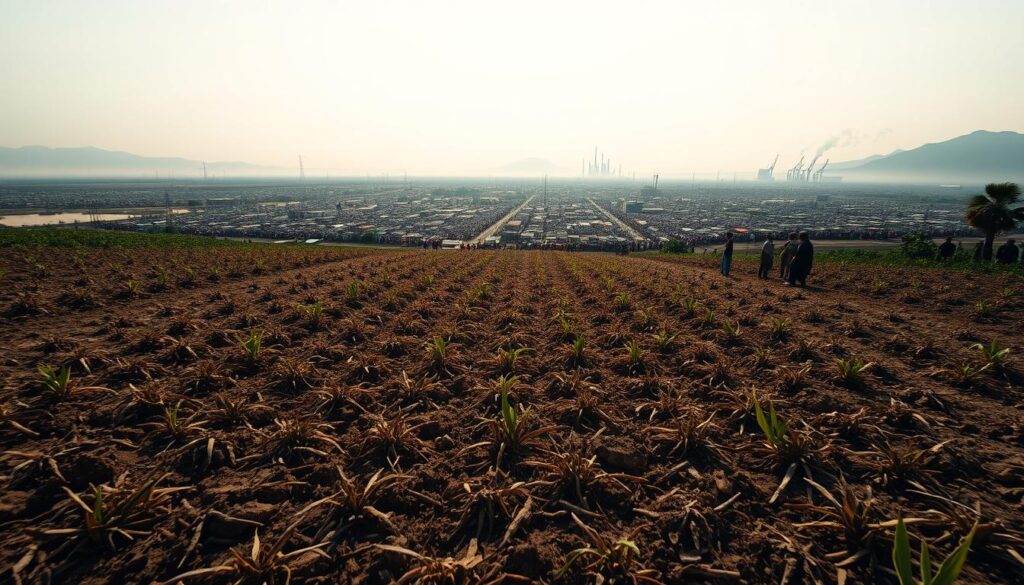
The world is facing a huge challenge in feeding more people. By 2050, we’ll need to produce 70% to 100% more food. Delicious burger varieties are becoming key to solving this problem.
Population growth is a big issue for food production. Our current farming can’t keep up with the demand for more food. New food science breakthroughs are making tasty burger options that could change how we eat.
- Global population expected to reach 9.7 billion by 2050
- Traditional meat production cannot sustainably meet future demands
- Alternative protein sources offer promising solutions
New food technologies are bringing fresh ideas to protein production. Plant-based and lab-grown meats could be big changes for food security. They need less resources than traditional farming.
We need to find ways to feed more people without harming the planet. Creating efficient food production is key to avoiding food shortages. It will help ensure everyone has access to nutritious food.
| Food Production Challenge | Potential Solution |
|---|---|
| Limited Agricultural Land | Alternative Protein Technologies |
| High Resource Consumption | Innovative Meat Alternatives |
The future of food depends on new technologies. We need sustainable, tasty, and nutritious options like delicious burgers. These innovations will help feed a growing world.
The Role of Technology in Sustainable Food Production
New technologies are changing food production a lot. They are making it better for the planet. This includes making new kinds of burgers that are different from traditional meat.
Food science is now making proteins in new ways. This is making it possible to have unique burgers everywhere. It’s a big change for food lovers around the world.
Innovation in Food Science
New technologies are leading the way in sustainable food. Some of these include:
- Cellular agriculture techniques
- Advanced plant-based protein development
- Precision fermentation technologies
- Bioreactor food production systems
Manufacturing Scalability
There’s a big challenge in making more alternative proteins. But, new tech is solving this problem. Now, making clean meat is like brewing beer, not farming.
| Technology | Production Capacity | Sustainability Impact |
|---|---|---|
| Cellular Agriculture | High Scalability | Reduced Environmental Footprint |
| Plant-Based Protein | Rapid Manufacturing | Minimal Resource Consumption |
These new technologies are not just changing how we make food. They are changing the whole way we think about making proteins. This makes it easier than ever to find sustainable and new food options.
Market Acceptance and Consumer Perception
The world of food is changing fast, with more people looking for new protein sources. They want to find the best burger menu in town, and that means trying new things.
How people see new food tech is really interesting. A recent study showed that different groups have different views. Here are some key findings:
- Millennials are most open to plant-based and lab-grown meats.
- Gen X is cautiously interested in sustainable food tech.
- Baby Boomers are more skeptical of non-traditional proteins.
Top burger places are adding new items to their menus. They want to attract health and eco-conscious customers. They’re marketing these new foods as sustainable, healthy, and good for the planet.
Success stories, like Greggs’ vegan sausage roll, show that the right marketing can win people over. Brands are working hard to make these new proteins taste and feel like the real thing.
The future of food is all about making new techs feel comfortable for everyone. As more people learn about these new proteins, they’re more likely to try them. These foods promise to be good for you and the planet.
The Future of Traditional Farming
The world of farming is changing fast, thanks to new food tech and what people want to eat. Farmers now face big challenges and chances to make food systems better. They must compete with new burger options.
Farming is not just about growing lots of crops anymore. Today, it’s about smart planning and creative ways to grow food.
Adapting to New Food Technologies
Farmers can use new tech to stay ahead. They should:
- Diversify crops
- Try heritage and tough crops
- Use precision farming
- Go for sustainable farming
Opportunities for Agricultural Evolution
The move to alternative proteins is a big chance for farming to change. Farmers can lead in food innovation by trying new ways to grow crops.
| Agricultural Strategy | Potential Impact |
|---|---|
| Crop Diversification | Increased resilience and market adaptability |
| Sustainable Practices | Reduced environmental footprint |
| Technology Integration | Enhanced productivity and efficiency |
By being open to new ideas and staying adaptable, traditional farmers can turn problems into chances. They can help make a better, more varied food world that meets the demand for gourmet and specialty burgers.
Challenges and Controversies
The rise of new meat alternatives has caused big debates in many areas. Delicious burger options have become a key point of argument. They challenge old ways of making food and raise questions about ethics.
There are several big challenges in these new protein technologies:
- Ethical worries from those who don’t eat meat
- Concerns about the environment if they’re made on a big scale
- People are unsure about lab-grown meat
- There are questions about their safety and nutrition
Vegetarians and animal rights groups have big concerns about lab-grown meat. They see it as a step back from the core values of plant-based diets. Even though these burgers are a big step forward in tech, some think they go against what’s right.
Research places and food tech companies are tackling these issues head-on. They aim to:
- Show how they make food
- Prove these burgers are as good as the real thing
- Make them better for the planet
- Win people’s trust by testing their safety
The conversation between scientists, consumers, and others will decide the future of these new proteins. Keeping up with new ideas and talking openly is key to solving problems and clearing up misunderstandings.
Conclusion
The world of food production is at a turning point. The phrase “One bite changed everything Burger menu” goes beyond words. It shows a big change in how we think about food, the planet, and new technologies.
Companies like Beyond Meat and Impossible Foods have shown us something special. They’ve made tasty, eco-friendly burgers. This shows that we can eat well and help the planet at the same time.
Looking into the future, we see food tech meeting big global issues. Lab-grown meat, plant-based foods, and green farming could solve many problems. These aren’t just new foods; they’re answers to big questions.
The food world is ready for big changes. Science, tech, and knowing what consumers want will lead the way. What started as new ways to make protein is now changing how we eat globally.
Alternative proteins show our ability to tackle tough problems. We can use our brains and tech to find solutions. Even though challenges are ahead, the push for green food shows a brighter future. A future where good food and caring for the earth go hand in hand.
